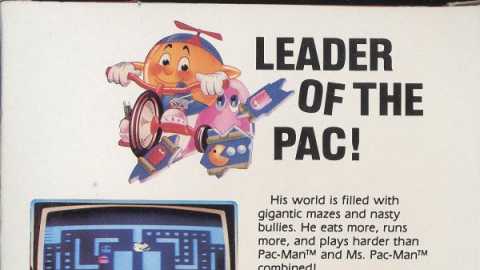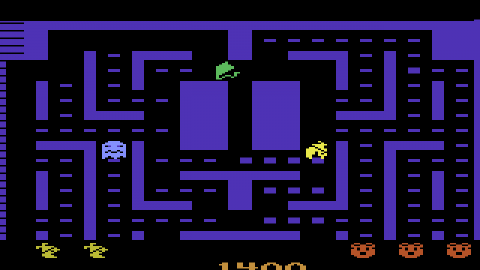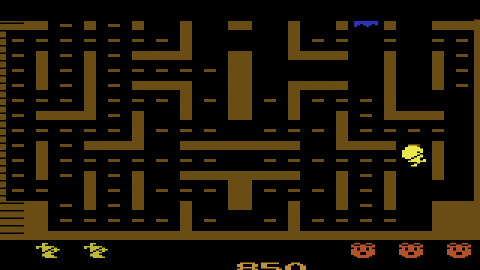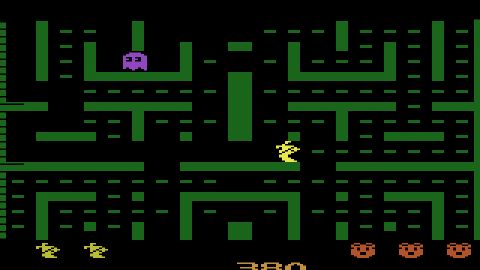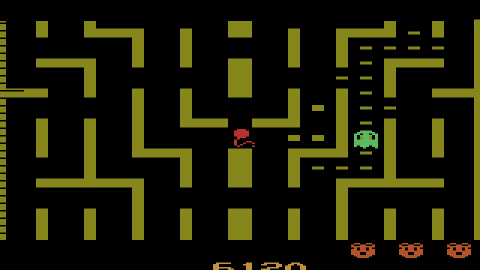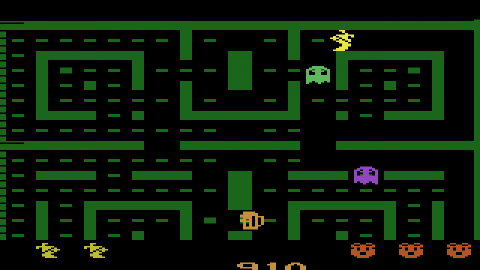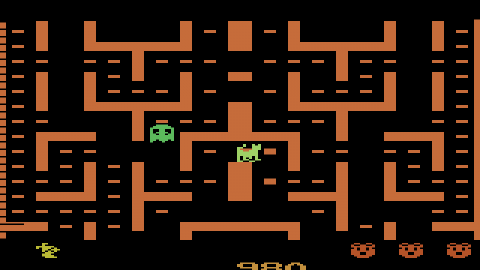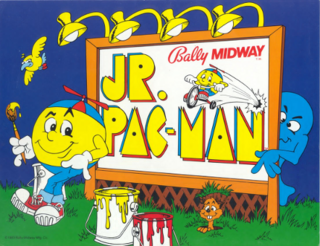Overview
Jr. Pac-Man features the same basic gameplay as Ms. Pac-Man, but utilizes large mazes that require a horizontal scrolling solution to display. At any given point during play slightly more than half of the maze is visible to the player. There are also no warp tunnels on the sides of the maze. Bonus items influence pellets they pass over while bouncing through the maze, increasing their point value from 10 to 50. Eating these 50 point pellets slows Jr. Pac-Man's movement more than regular pellets. There are additional power pellets scattered throughout the larger mazes than would be found in other smaller Pac-Man games.
Another change worth noting: Clyde's name has been changed to Tim.
There are seven mazes in the arcade version of Jr. Pac-Man. There are also cutscenes which depict Jr. Pac-Man's blossoming relationship with a red ghost named Yum-Yum.
Jr. Pac-Man was the final unlicensed Pac-Man sequel developed by Midway. After the tacitly licensed Ms. Pac-Man, the eventually repatriated Pac-Man Plus, and the fully unsanctioned Baby Pac-Man, Professor Pac-Man, and this title, Namco ended their arcade publishing relations with Bally Midway.
Release History
Though this was an unsanctioned game that used a third party license, Jr. Pac-Man received a handful of ports. It was released on the 2600 by Atari Corporation in 1986, and GCC developed but never released a port for the 5200. There were also ports to MS-DOS and the Commodore 64. Bob DeCrescenzo developed and released a homebrew port of Jr. Pac-Man for the Atari 7800 around 2010.

 Commodore 64
Commodore 64 PC
PC




